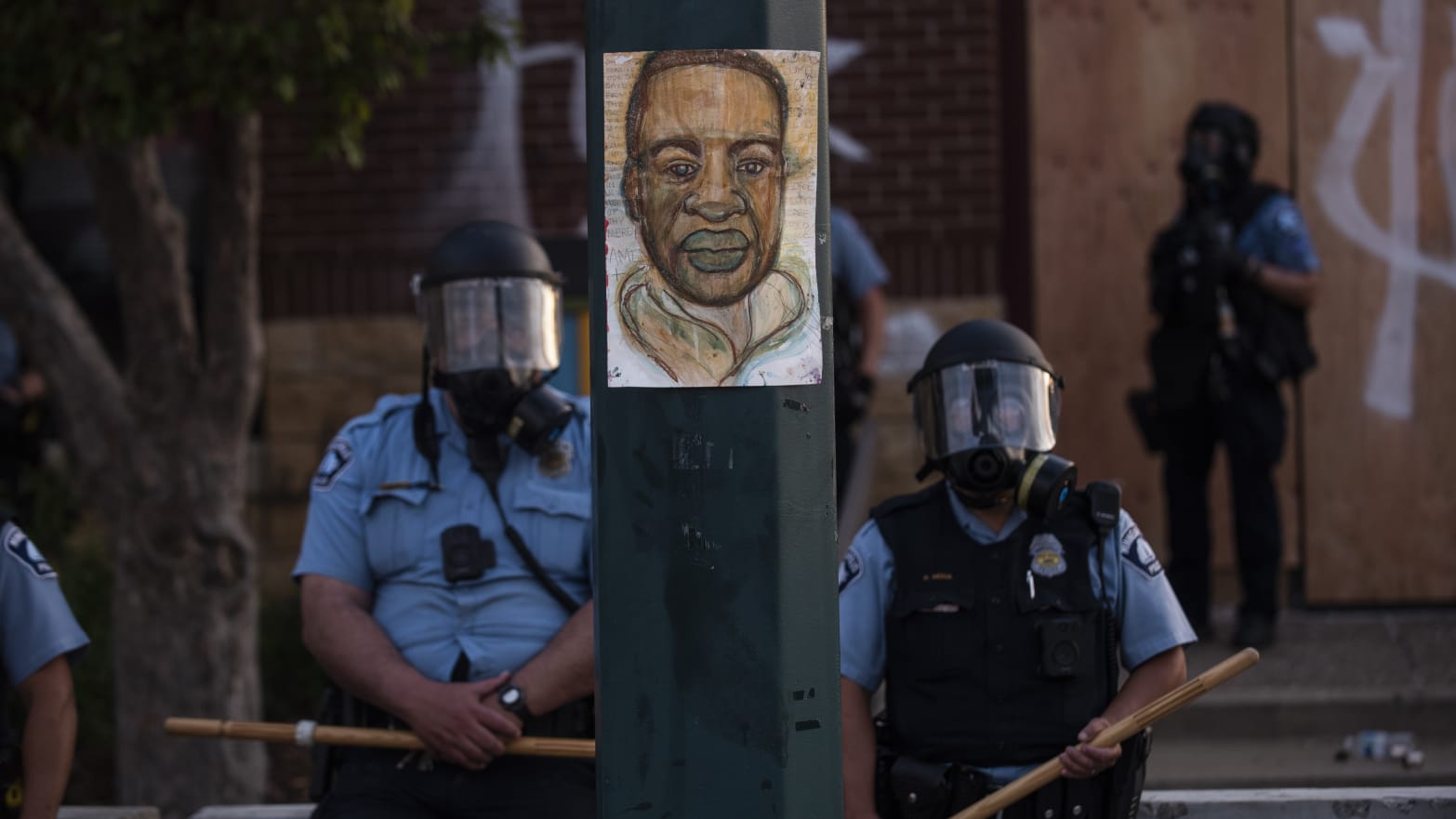A Minneapolis police dispatcher was so alarmed by real-time footage of George Floyd’s violent arrest that she flagged the situation to her supervisor, telling him over the phone, “I don’t know you can call me a snitch if you want.”
“I don’t know if they had to use force or not, but they got something out of the back of the squad, and all of them sat on this man,” the unidentified 911 dispatcher said in a recording of the call released Monday by the city of Minneapolis.
The dispatcher, who has not been identified, watched Floyd’s death as it was happening in footage from a squad-car camera—and was so alarmed by how the officers responded she immediately reached out, telling the supervisor that the take-down looked “a little different.”
“So I don’t know if they needed you or not, but they haven’t said anything to me yet,” she added.
The supervisor, who has also yet to be identified, told the dispatcher that “they haven’t said anything yet,” minimizing the now-infamous incident by stating it was “just a takedown, which doesn’t count” but promising to “find out.”
“No problem, we don’t get to ever see it so when we see it we’re just like, well, that looks a little different, but…” the dispatcher said. Her supervisor responded: “Sounds good, bye.”
It is not clear whether the police supervisor responded to the scene.
The audio only raises more questions about how the Minneapolis Police Department handled the arrest of Floyd, an unarmed Black man, which has ignited worldwide protests against police brutality.
The department did not immediately respond to The Daily Beast’s request for comment.
Former Minneapolis Police Officer Derek Chauvin, the officer who held his knee on Floyd’s neck, faces several charges, including second-degree murder, for causing the 46-year-old’s death through “culpable negligence,” including using a restraint that police are taught is “inherently dangerous,” according to a criminal complaint.
The three other former officers involved—Thomas Lane, Tou Thao, and J. Alexander Kueng—have also been charged with aiding and abetting second-degree murder while committing a felony and with aiding and abetting second-degree manslaughter with culpable negligence.
All four cops were fired May 26, as explosive footage of the arrest led to an international outcry and calls for a federal investigation.
Prosecutors allege that two officers, Lane and Kueng, initially responded to a call at 8:08 p.m. on May 25 that Floyd had used a counterfeit $20 bill at a convenience store. When the two officers found Floyd outside in his car, they asked him to get out. According to a criminal complaint, after having a two-minute conversation with the officers outside his car, Floyd stiffened up and fell to the ground while saying he was claustrophobic as they tried to put him inside a squad car.
Officers Chauvin and Thao arrived and all four men tried to get Floyd in the car, but he kept falling down and saying he couldn’t breathe, the complaint states.
When Floyd fell down again, Kueng held his back and Lane held his legs—while Chauvin placed his knee on the unarmed man’s neck. The move prompted Floyd to call out for his mother and say several times that he couldn’t breathe. “I’m about to die,” he warned at one point, according to the complaint.
After Floyd stopped moving at around 8:24 p.m., Lane again suggested moving him onto his side, while Kueng checked for a pulse but couldn’t find one. The officers never changed Floyd’s position, prosecutors said.
EMTs told investigators that when Floyd was loaded into an ambulance, he had no pulse.
According to body-camera footage, Chauvin had his knee on Floyd’s neck for 8 minutes and 46 seconds—including nearly three minutes in which Floyd was unresponsive.
According to one off-duty city firefighter who happened upon the scene, the officers did “not take a pulse” and did “not do anything to save a man.”
“I am a first responder myself, and I literally have it on a video camera,” the firefighter told a 911 dispatcher around 8:30 p.m., according to a transcript of the call that was also released Monday. “I just happened to be on a walk so, this dude, this, they fucking killed him so.”
While the firefighter asked to speak to the officers’ supervisors to further explain the situation, the line soon disconnected. Although the transcript shows a dispatcher trying to call back several times, the firefighter does not get back on the line.
An updated report from the Hennepin County Medical Examiner indicated that Floyd died due to cardiac arrest from the restraint and neck compression. The medical examiner’s office report also notes there were indications Floyd had heart disease and there was fentanyl in his system.
An independent report commissioned by Floyd’s family, however, states that the 46-year-old was in good health and died of strangulation from pressure to his back and neck. Both reports concluded that Floyd’s death was a homicide.

